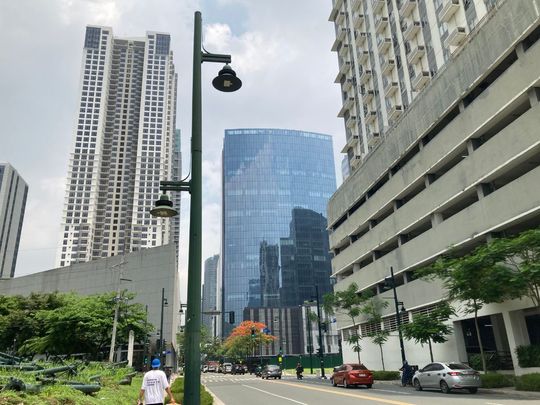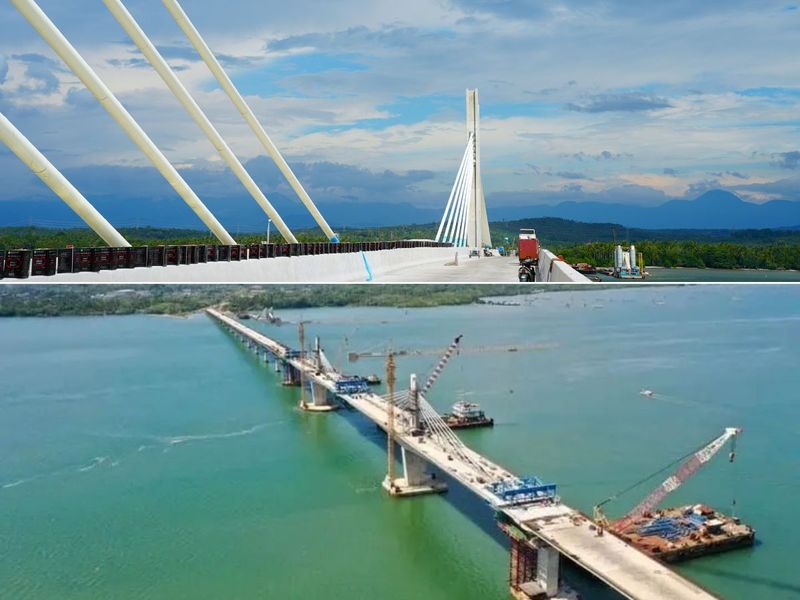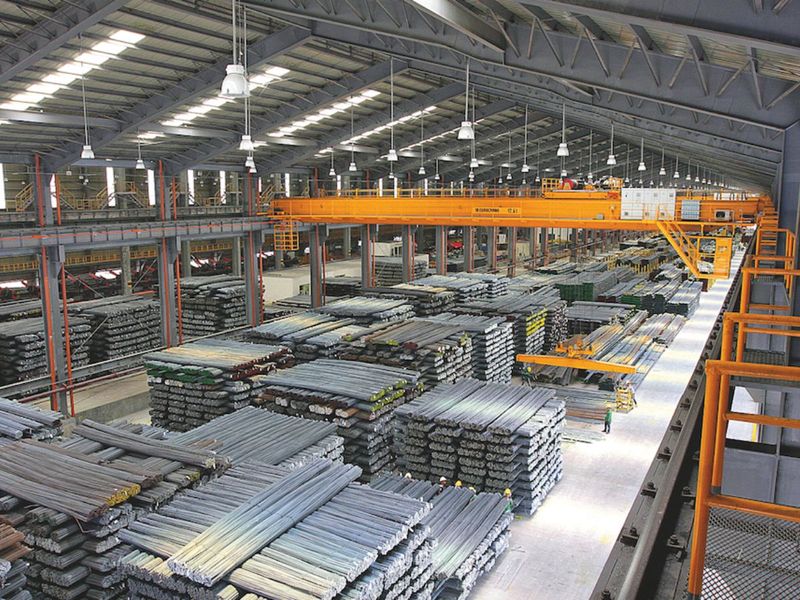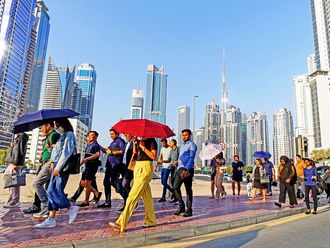
Manila: With a special visa for skilled foreigners and more tax incentives for businesses, the Philippines could grab an “A” credit rating before the decade is out, a leading legislator declared.
It's no idle boast: It has a number of pillars on which to stand.
First, the billions of dollars sent home by overseas Filipino workers (OFWs) each year, which fuel domestic consumption.
Second, a fresh raft of tax incentives for businesses.
Third, special visas for highly-skilled foreign workers, which form part of a new legislation.
Other factors: a relatively young population, the on-going resolution of communist and separatist insurgencies, a ramp in renewables that could potentially lower power cost, and a push to further digitise governance, including Customs.
Has the Philippines found the right formula to compete with its more prosperous neighbours?
Let's dive right in:
Game-changer
A confluence of these factors, when realised to the full, could be a real game-changer.
A credit rating evaluates the creditworthiness of a borrower (a country, a corporation, or an individual); a higher rating indicates a lower risk of default.
Currently, the Philippines holds an “A-” rating from the Japan Credit Rating Agency (JCR), “BBB” from Fitch Ratings, “Baa2” from Moody's Ratings, and “BBB+” from Standard & Poor's (S&P) Global Ratings.
Certain isincentives for local businesses, especially manufacturing, pose huge snags: high (unsubsidised) power rates compared to major Asean economies, lack of infrastructure and a lack of special skilled foreign workers' visa similar to what other neighbouring countries offer.
This is about to change.
Implications
A higher credit rating could have significant benefits: lower borrowing costs, a bump in investments and improved access to capital markets.
Countries with top credit ratings can borrow money at lower interest rates, too, reducing the burden on taxpayers.
It forms a virtuous cycle: Investors are more likely to invest in countries with high credit ratings, as they perceive them as safer and more stable, which creates more opportunities, which creates more investments.
The proposed visa scheme allowing highly-skilled foreign workers to stay in the country longer or permanently, is just the icing on the cake. It's in the final stages of the legislative millbefore becoming a law.
Together, these moves will not only open up new opportunities to raise capital, but will also bump up its overall competitiveness.
The path to an "A" credit rating
According to Congressman Jose “Joey” Salceda, a respected economist and a member of the Philippine House of Representatives, the Asian country is on track to achieve an "A" credit rating by 2028, if not sooner.
He credits the government's pro-investment policies – and even lower corporate taxes, in addition to incentives for business, under the "CREATE MORE" bill.
This legislation aims to clarify inconsistencies in the tax regime and align it with the OECD’s Pillar Two Global Minimum Tax (GMT).
• The CREATE MORE bill also enables investment promotion agencies (IPAs) to issue special visas aimed at attracting highly-skilled foreign talent.
• These include a special skills visa for foreign nationals with specialised skills deemed essential by the IPA, and an executive working visa for executives, including presidents and managers, as well as non-resident aliens in technical or advisory roles.
• Executive working visa for foreign nationals holding executive positions, including presidents, vice presidents, treasurers, managers, or their equivalents, and to non-resident aliens employed in supervisory, technical, and advisory positions.
• The bill requires IPAs to develop application guidelines with the Bureau of Immigration (BI) and oversee visa compliance.
Salceda, chair of the powerful House Ways and Means Committee, also credited President Ferdinand R. Marcos Jr.'s "steady hand" in fiscal and economic policy.

"High energy and food prices persist and overall sentiment is gloomy, especially with China’s slowdown and continuing challenges in Europe. And yet, the country’s prospects remain strong. This is in large part due to the President’s decisively pro-investment and fiscally responsible policies," he was quoted by the Philippine News Agency as saying.
Moody's affirms rating
Moody’s Ratings has recently affirmed its "BAA2" investment-grade credit rating of the Philippines with a "stable” outlook. The fresh ratings mark a significant milestone. It also means: financing for major projects such as roads, bridges, airports and other infrastructure, especialy those using public-private partnerships (PPPs) to get help from private investors, could get a boost.
Key factors
Several factors are contributing to the Philippines' improved credit outlook:
Economic growth:
The Philippines has been experiencing steady economic growth. The Philippines ended 2023 on a high note, being the fastest growing economy across Southeast Asia with a growth rate of 5.6 percent, according to the World Bank.

Fiscal discipline:
The government has implemented measures to improve its fiscal position, including curbing the budget deficit. Fiscal expenditure refers to the sum of government expenses. In 2023, the fiscal gap was narrowed, thanks to the 7.86 per cent increase in revenue collection, surpassing the 3.42 per cent growth in government spending.
The Department of Budget and Management (DBM) reported that the government ran a 1.512-trillion pesos budget deficit in 2023, marking a 6.32 per cent drop (102.0 billion pesos) year-over-year. The FY 2023 deficit stood at 6.2 per cent of GDP (slightly higher than than the 6.1 per cent program) but was significantly below the 7.3 per cent deficit-to-GDP ratio recorded in 2022.
Trading Economics also reported that the Philippine fiscal expenditure decreased to 486.22 billion pesos in July from 505.6 billion pesos in June of 2024. The narrower the fiscal gap, the lower the need for the government to borrow.
Balance of payments:
Though $1.4-billion H1 2024 surplus is lower than the $2.3-billion surplus recorded from January to June 2023, it remains in positive territory, as against the mostly negative BOP status for 2 decades from 1980 (-$1.9 billion) to 2000 (-$2.88 billion), as per World Bank data.
The BSP is awash with cash. The country's gross international reserves (GIR), including gold and US dollars, went up to $105.65 billion as of end-July 2024, from $105 from the previous month.
Inflation control:
The government has successfully managed inflation, which helps to maintain price stability and boost investor confidence. Inflation rate in Philippines slid to 3.30 per cent in August from 4.40 percent in July of 2024, According to Trading Economics global macro models and analysts expectations. It was expected to be at 3.90 per cent by the end of Q3 2024.
OFW remittances
This is the 100-pound: Generally, remittances from Overseas Filipino Workers (OFWs) have a substantial positive effect on a country's overall credit rating.

The Philippine Statistics Authority (PSA) reported that the country received $33.5 billion in inward remittances from overseas Filipino workers in 2023, a 2.9 per cent increase from $32.5 billion in 2022 – a 31 per cent jump (more than $10 billion higher) from a decade ago, when the country recorded $22.9 billion in remittance (2013).
These remittances bolster a nation's balance of payments, increase its foreign exchange reserves, and enhance its overall economic stability.
These factors, in turn, improve the perception of the country's creditworthiness among investors and rating agencies.
Two academic sources support this claim: In "The Macroeconomic Impact of Remittances in the Philippines", economist Cayetano W. Paderanga, Jr. analysed the impact of remittances on the Philippine economy, focusing on their contribution to the balance of payments, foreign exchange reserves, and overall economic stability.
Economists Ramon G. Lopez and Emmanuel F. Esguerra, author of “Remittances and the Money Supply: A Case Study of the Philippines” noted how remittances affect the money supply and inflation in the Philippines. Both highlight the positive impact of OFW remittances on economic growth and the country's creditworthiness.

Challenges
While notable progress has been made, challenges remain: There are 143 PPP projects in the pipeline, including at least 15 airport refurbishments, worth tens of billions of dollars.
These projects include other things like healthcare, water, and waste management. The government is also working on “185 flagship projects”.
Making an effort to ease the entry of foreign companies to invest in the Philippines is one thing; actually making it happen is another.
Some investors, even lawmakers themselves, worry that the government is not moving fast enough, especially given the tough right-of-way (ROW) issues and the granting of certificates for key projects by both national and local authorities.
Both the Light Rail 1 and MRT 7, for example, are stalled by ROW snags.
Moreover, the government needs to continue to address its national debt, improve its financial sector, and support its manufacturing and agriculture industries.
By doing so, the Philippines can further strengthen its economic fundamentals and achieve a higher credit rating.
Benefits of an "A" rating
A higher credit rating would bring significant benefits to the Philippines, including the fact that the government could borrow money at lower interest rates, reducing the burden on taxpayers and freeing up resources for other priorities.
Moreover, with increased foreign direct investment comes increased capital inflows and job creation. The ability to raise funds more easily in international financial markets, provides the country greater flexibility to finance its development.
A higher credit rating would improve the Philippines' reputation as a stable and attractive investment destination.
Enhanced Deductions: Companies can opt for a 20% tax rate on income from registered projects under an enhanced deduction regime (EDR). This allows significant deductions for research and development, training, and other expenses.
Tax Holiday: Eligible companies can enjoy a four to seven-year tax holiday, followed by either a 5% Special Corporate Income Tax (SCIT) or the EDR.
Alignment with OECD Rules: The bill proposes lowering the standard corporate income tax (CIT) rate to incentivize companies to adopt the EDR, addressing the 15% GMT requirement for multinational enterprises.
Registered Business Enterprise Local Tax: A new local tax of up to 2% of gross sales will replace various local taxes for companies benefiting from the tax holiday or EDR.
Special Visa Incentives: The bill allows for special visas for highly skilled foreign workers and executives, aimed at attracting talent necessary for registered businesses.
Clarified VAT Policies: The bill clarifies VAT exemption rules for imported goods and local purchases, detailing eligibility and conditions for services related to registered projects.
Overall, the CREATE MORE bill enhances the Philippines' investment climate by providing clearer regulations and improved incentives for both domestic and foreign companies. It has been submitted to the Senate for further deliberation.










